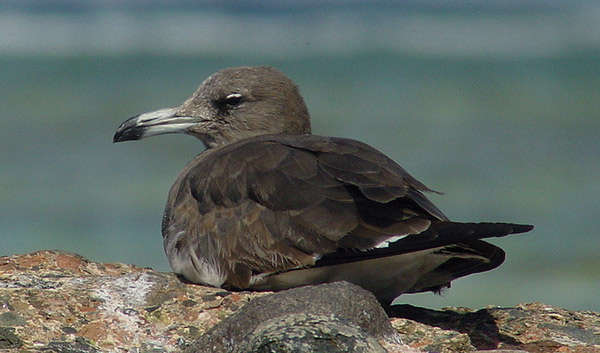 White-eyed Gull (L. leucophthalmus)
& Sooty Gull (L. hemprichii)
White-eyed Gull (L. leucophthalmus)
& Sooty Gull (L. hemprichii)
(last update:
Sooty Gull L. hemprichii 3CY, March 04 2002, visitor's centre of Nabq National Park, SE Sinai, Egypt.
The second generation tail-feathers show various amount
of black in second winter creating a broken tail-band. The black primaries have a rounded top, unlike the pointed juvenile primaries. Note that second generation inner primaries
(p1-p5) already show white
tips in Sooty Gull, like in many medium-sized gulls, e.g. Common Gull (L.
canus).
The wing-coverts are all second generation at least and look neat compared to
the very abraded wing of a first winter bird. The complete moult to second
winter takes place between probably August and May, a wide range depending on
the geographical location of the breeding population and subsequent hatching of
the eggs. This results in various stages of wear in the wing-coverts (and other
feathers of course). In this bird, most of the wing-coverts and tertials appear dark brown-grey as in adults.
Earlier required feathers already show some wear in the fringes while the covert
moult may still be in progress. The large time span for upper-part moult
makes it difficult to establish the exact period for partial spring moult and
complete autumn moult.
Note the stronger, straight bill compared to White-eyed Gulls. It has a blue-grey base and a black tip. The ill-defined crescent is much
less obvious than similar aged White-eyed Gulls. Note the lack of any blackish
feathers on the head and neck, which are typical for White-eyed Gull. The legs
are still greyish.
